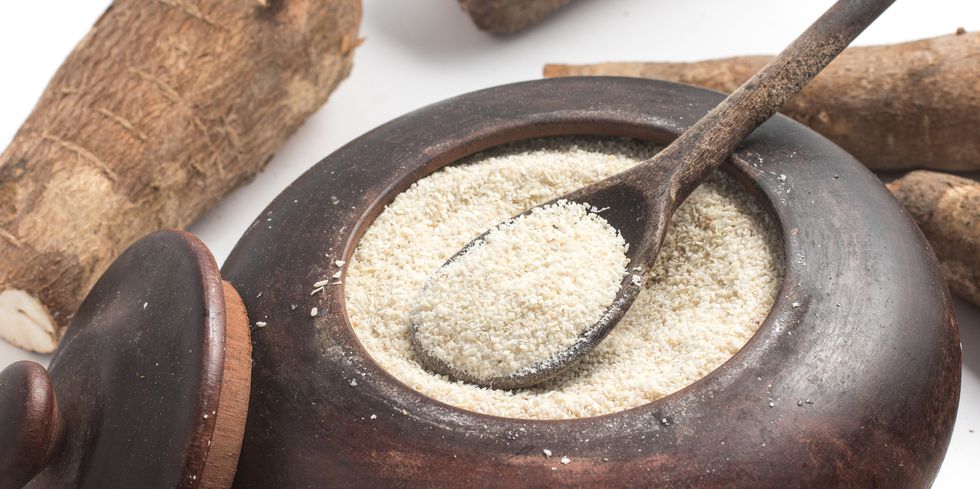Having survived Whole30, I was fully prepared to cut out grains and gluten to find the answer to my prolonged GI distress, but then my health practitioner prescribed an elimination diet that also nixed corn, potato, and tree nuts.
Identifying substitutes for 95% of my favorite foods was a snap, but I hit a brick wall trying to source breads, flour, pizza crusts, and especially my beloved tortilla chips. What most people don’t realize is that the majority of “gluten-free” products use corn or potato starches or almond flours as fillers — all things expressly forbidden in my three-month trial.
Enter cassava flour. Food allergy-friendly and readily available online and in health food stores, this lesser-known starch immediately became a dietary staple.
Whether you’re trying a paleo plan or doing an elimination diet of your own, here are five things you should know about about cassava flour:
1. Native to South America and also known as yuca, cassava is a root vegetable, making it similar to other starches such as carrots, beets, and parsnips.
2. While comprised predominantly of carbohydrates, cassava flour is also a great source of Vitamin C and manganese.
3. Many cassava products are naturally vegan as well as nut-, grain-, and gluten-free, making them a great choice for those on selective diets or with food allergies and sensitivities.
4. The extracted starch from cassava goes into products like tapioca and arrowroot.
5. Cassava flour’s white color, neutral taste, and fine texture make it an excellent baking substitute, so you don’t have to miss out on sweet treats if you’re unable to consume other flours or grains. You can even make your own at home with this recipe from Predominantly Paleo.
Before you go all in on cassava-based foods, however, know that these trendy products don’t give you a free pass. “Many are made with coconut flour or oil for paleo eaters, which can raise the saturated fat content significantly,” says Jaclyn London, MS, RD, CDN, Nutrition Director at the Good Housekeeping Institute. “Cassava is also a concentrated source of dietary carbs. So while it’s ultra-satisfying and nutrient-rich for athletes in training, portion size is still key.”












